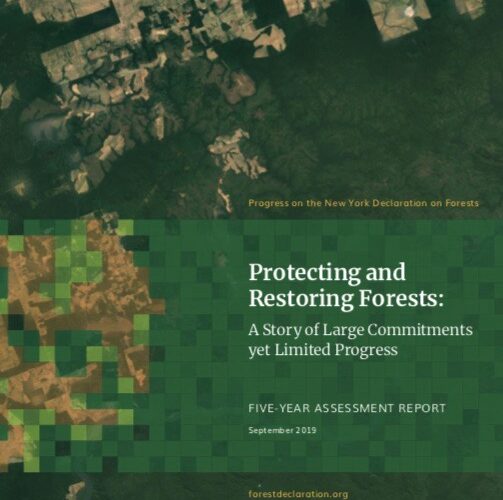In September 2014, a broad coalition of governments, companies, civil society, and indigenous peoples’ organizations endorsed the New York Declaration on Forests (NYDF). Driven by the shared understanding that halting deforestation is essential to keep temperature increases below 2 degrees Celsius above pre-industrial levels, the endorsers — who now number over 200 — adopted an ambitious declaration detailing ten goals. By committing to the ten goals of the declaration, endorsers have agreed to work toward halving tropical deforestation by 2020 and ending it by 2030. The NYDF also calls for the restoration of 150 million hectares of degraded landscapes and forestlands by 2020 and 350 million hectares by 2030.
Five years later, there is little evidence that these goals are on track, and achieving the 2020 NYDF targets is likely impossible. Tropical deforestation has continued at an unsustainable pace since 2014. Furthermore, while the political will to restore degraded land has increased, efforts to implement restoration promises have been slow to gain traction. So far, most restoration has taken place outside of the natural forest. Forestlands continue to be converted to other commercial land uses, indicating that the short-term profits of forest conversion still trump the long-term benefits of forest conservation and restoration in many land-use decisions.
Despite what these trends may suggest, many private and public actors have taken action to address deforestation — but these often lack ambition and remain isolated. For example, companies are assessing their contributions to deforestation and governments are initiating conservation and restoration programs and projects. Overall, however, actions to address the direct and indirect drivers of deforestation and incentivize and fund restoration are inadequate to catalyze a systemic shift in behavior. Rather, they are often disconnected from the broader socioeconomic situation or are not designed to deal with multiple interconnected deforestation drivers.





